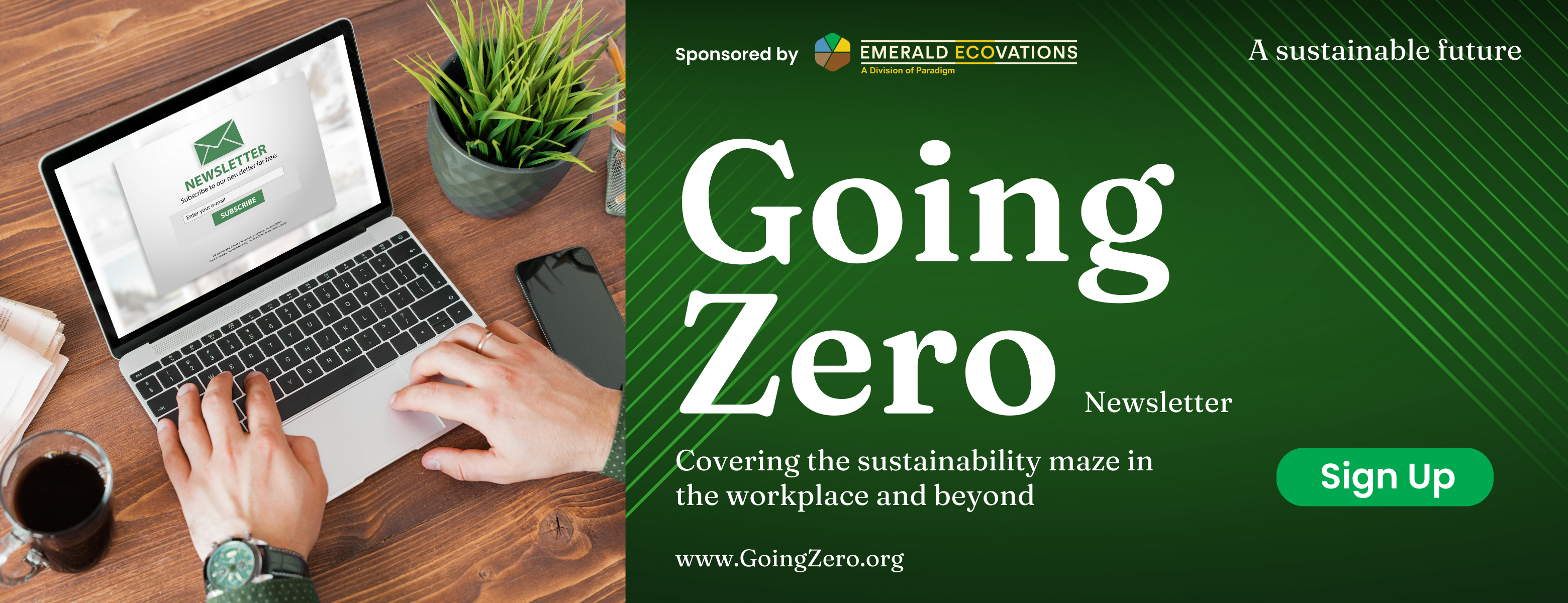
A Strategic Guide for Business Executives
In the rapidly evolving business landscape, sustainability has transformed from a niche interest into a critical component of strategic planning. This shift is driven by both environmental necessities and a growing recognition of the financial benefits associated with sustainable practices.
The transition towards a green economy offers lucrative opportunities for businesses willing to innovate and adapt. We’ll explore case studies, integrate recent statistics, and provide a clear picture of what sustainability means in today’s business world.
Understanding Sustainability Investments
Definition and Scope
Sustainability investments focus on creating long-term value by integrating environmental, social, and governance (ESG) criteria into business decisions. These investments are not just about mitigating risks or complying with regulations; they’re about pioneering innovative solutions that lead to a sustainable future while also securing competitive advantages.
Role in Modern Business Strategies
Integrating ESG criteria into your investment strategy helps in identifying companies that are leaders in sustainability, poised for growth and resilience. This integration aids in:
- Risk Management: Companies focused on sustainability are often better equipped to handle environmental and regulatory challenges.
- Brand Enhancement: Sustainable practices can significantly boost a company’s image, attract talent, and build customer loyalty.
- Operational Efficiencies: Sustainable investments often lead to cost savings through improved energy efficiency and waste reduction.
Case Studies
- Tesla Inc. – As a leader in electric vehicles, Tesla represents a prime example of sustainability driving profitability. The company’s commitment to renewable energy solutions has not only transformed the automotive industry but also cemented its status as a market leader.
- Unilever – This global giant has integrated sustainability into its core business strategy through its Sustainable Living Plan. The initiative aims to decouple the company’s growth from its environmental footprint, while increasing its positive social impact. This approach has led to substantial cost savings and a stronger market position.
Market Trends and Opportunities
Growth of Sustainable Investments
According to the Global Sustainable Investment Alliance, sustainable investment assets reached $35.3 trillion in 2020, marking a 15% increase from 2018.
The global market for sustainable investments has been growing at an unprecedented rate. This trend underscores the shifting priorities of investors towards more ethical and sustainable business practices.
Driving Factors
Several key trends are propelling the market for sustainable investments:
- Regulatory Support: Governments worldwide are introducing policies to promote sustainable practices, from carbon pricing to incentives for renewable energy adoption.
- Consumer Demand: More consumers are choosing products and services from companies that demonstrate social and environmental responsibility.
- Technological Advancements: Innovations such as renewable energy technologies, electric vehicles, and sustainable agriculture practices are creating new investment opportunities.
Future Predictions
Experts predict that by 2030, a significant portion of global assets under management will be allocated towards sustainability-focused funds.
This shift will likely be driven by enhanced regulatory frameworks and a deeper understanding of climate-related risks.
Financial Instruments and Incentives
Financial Instruments
Sustainable investing involves various financial tools designed to support environmental and social initiatives. Among these, green bonds and sustainable loans are particularly noteworthy:
- Green Bonds: These are bonds specifically issued to fund projects that have positive environmental and/or climate benefits. Green bonds have seen a surge in popularity as they provide a way for companies to raise capital specifically for sustainability projects, from renewable energy installations to clean transportation.
- Sustainable Loans: These are loans that incentivize borrowers to achieve certain predetermined sustainability performance targets. The terms of these loans are often directly linked to the borrower’s ability to meet these ESG criteria, which can lead to lower interest rates or more favorable loan conditions.
- Social Bonds: Aimed at funding projects with positive social outcomes, such as affordable housing or healthcare facilities. Like green bonds, these are appealing to investors who are looking to generate social as well as financial returns on their investments.
Government Incentives
Several government incentives are also available to support sustainable investment:
- Tax Credits and Rebates: Many governments offer tax incentives to encourage companies to invest in renewable energy sources. For example, solar investment tax credits allow businesses to deduct a percentage of the cost of installing solar panels from their taxes.
- Grants and Subsidies: These are often provided to help offset the initial costs associated with transitioning to green technologies. For instance, grants may be available for businesses that are looking to reduce their carbon footprint by upgrading their manufacturing processes or building facilities.
- Regulatory Improvements: Changes in regulations can also act as an incentive, such as enhanced depreciation schedules for sustainable equipment or exemptions for eco-friendly products from certain regulations.
Benefits of Using Financial Instruments
These financial instruments and incentives offer several benefits:
- Risk Mitigation: They can help reduce the financial risk associated with investing in new and potentially untested sustainability technologies.
- Cost Reduction: By taking advantage of government incentives, companies can significantly lower the costs associated with their sustainability projects.
- Enhanced Returns: Financial instruments like green bonds often attract a diverse range of investors, potentially leading to better financing terms and lower capital costs.
Challenges in Sustainable Investing
Sustainable investing, while rewarding, presents unique challenges that require careful navigation. Business executives need to be aware of these hurdles to effectively manage their sustainability initiatives.
Complexity of Measurement and Reporting
The effectiveness of sustainability investments often depends on accurate measurement and reporting of environmental and social impacts. This requires robust frameworks and metrics, which can be complex to implement:
- Standardization Issues: There is a lack of universal standards for measuring sustainability, which can lead to inconsistencies and difficulties in benchmarking and reporting.
- Data Quality and Availability: Obtaining reliable and timely data to assess the impact of sustainability initiatives can be challenging, especially in regions with less developed infrastructures.
Market and Regulatory Uncertainty
Sustainable investing is influenced heavily by regulatory environments which can change unpredictably:
- Regulatory Risks: Changes in sustainability-related regulations can affect the viability and profitability of investments. For instance, a shift in government policy on renewable energy can impact the returns on investments in this sector.
- Market Volatility: The market for green technologies is still maturing, and this can lead to price volatility and uncertainty about the future value of investments.
Higher Upfront Costs
Investing in sustainable technologies often involves higher initial costs compared to conventional options, although they may offer long-term savings and benefits:
- Capital Intensive: Technologies such as solar panels or wind turbines require substantial upfront investments, which can be a barrier for many companies.
- ROI Uncertainty: The return on investment (ROI) for sustainable technologies can be uncertain, especially if they are new or untested.
Implementing Sustainability in Business
For executives committed to sustainability, integrating these practices within their business operations is crucial. Here are practical steps to achieve this:
- Strategic Alignment: Ensure that sustainability goals are aligned with the overall business strategy. This integration helps in creating a unified vision and facilitates easier adoption across the organization.
- Stakeholder Engagement: Engage with all stakeholders, including employees, customers, investors, and local communities. This not only enhances the legitimacy of the efforts but also encourages collaboration and support.
- Technology and Innovation: Leverage technology to enhance efficiency and effectiveness of sustainability initiatives. Innovations such as blockchain for supply chain transparency or AI for energy management can drive significant improvements.
- Continuous Learning and Adaptation: Sustainability is a rapidly evolving field. Staying informed about new trends, technologies, and regulatory changes can help businesses adapt and optimize their sustainability strategies.
Conclusion
Investing in sustainability is a fundamental business strategy that drives long-term profitability and stability. For business executives, navigating the complexities of sustainable investments involves understanding both the opportunities and the inherent challenges.
By leveraging financial instruments, adapting to regulatory environments, and implementing practical steps toward sustainability, companies can not only contribute to global environmental goals but also carve a competitive edge in the green economy.
Related Articles
Our Mission and Innovations
Launched in 1997, our mission has been to end deforestation and plastic pollution by providing sustainable solutions for everyday essentials.
How does compost contribute to the sustainability of food production?
As the world moves towards more sustainable practices, composting is becoming a cornerstone in transforming food production. It leverages organic waste management to enrich soil, reduce pollution, and promote the recycling of nutrients. According to the Environmental...
Can you compost paper plates?
As of 2020, the United States generated approximately 292.4 million tons of waste, with only about 32.1% being recycled or composted. For leaders in the food service sector, it's crucial to understand your role in this dynamic and explore options for sustainable...
Are Paper Plates Compostable? A Simple Guide
Are paper plates compostable? It depends on the type of paper plates you buy. Emerald Ecovations Tree-Free plates are eco-friendly and commercially compostable.
Discover the Advantages of Kraft Paper Bags for Eco-Friendly Packaging
Explore the advantages of kraft paper bags for sustainable packaging, highlighting their eco-friendliness, versatility, and positive impact on the environment.
The Truth About Cheap Laundry Detergent
“Discover the hidden truths about cheap laundry detergent. Uncover its effectiveness, potential drawbacks, and how it impacts your laundry routine and budget.
“






